The Joy of Comics
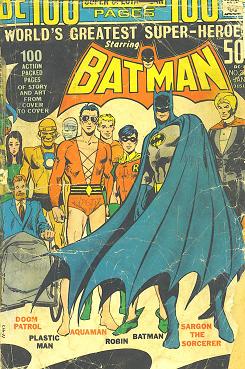
This 1972 100 page Batman is one of the few comics to survive my childhood. You can still see where my mother wrote the character's names on them for me!
With the recent landmark sales of Action Comics #1 for a whopping $1 million dollars and the immediate follow up sale of Detective Comics #27 for $1,075,500, I found myself revisiting exactly why I love comic books and why I collect them. Both of the issues in question had been graded prior to sale by the Certified Guaranty Company (CGC), which provides a professional grading service for a fee. Depending on the type of service and desired turnaround time, their fee can be anywhere from around $10 to $85 for a single comic book. In most cases, once graded, a comic book is returned to its owner sealed in a protective plastic cover with a header card displaying the grade it was assigned. These covers are not intended to be removed and if they are, the grade is nullified and the book would have to be submitted again. To me, this practice of sealing comic books is ridiculous. It defeats the very purpose the item was created for by preventing it from being read and enjoyed.
I started “reading” comic books even before I could read. I realize this amounted to just looking at the pictures but I tried my best to decipher what was going on in those four color panels without the benefit of words to guide me. Occasionally I was able to get someone to read them to me but it wasn’t often enough to satisfy my appetite and this fueled my desire to learn how to read on my own so I could unlock this fascinating world of fantastic stories. Some of the oldest comic books I have from my childhood are dated around 1970 and 1971. I would have been around four to five at that time and the idea of something a like a “comic book store” in my hometown of Ocala was just a dream in my mind. I had make due by purchasing my “funny books”, as my mother referred to them, at the local Qwik King or Jiffy Food Stores a few miles from my house. Fortunately, my parents made frequent trips to these establishments and I could usually con them out of one to two comic books a week.
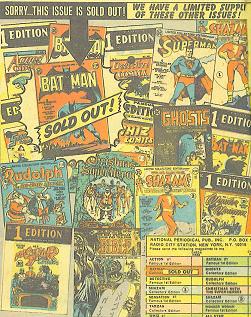
A DC house ad for the Famous 1st Edition series and other giant sized comics
I may be biased, but I believe the 1970’s were an optimal time to be a comic book reader. DC comics had a major resurgence of popularity in the early 60’s when they revamped many of their older superhero characters. Later in that decade, they brought back many of the original heroes through their multiple Earths concept and teamed them with their modern counterparts. In the 70’s, DC continued to revive their Golden Age heroes and also incorporated the heroes of other comic companies they had purchased, like Quality and Fawcett, into their ever expanding universe. They also made a major effort to reprint as many Golden Age stories as they could in the various “giant”, “special”, and “super spectacular” books they published. If this wasn’t enough to stimulate interest in the rich history of comic books, they also did oversized complete reprints of key issues like Action Comics #1 as part of their Famous 1st Editions line.
I was a DC superhero fan from just about day one. I tried Marvel heroes and other genres like science fiction or westerns but I just kept coming back to DC. Whenever I would buy a new comic book, I would diligently read it from cover to cover. I not only enjoyed the main story, but also the advertising, letter columns, and any other ephemera that might be thrown in to fill pages. The letters section was great for other reader’s opinions and suggestions and getting details on older stories I might have missed. The ads were usually a source of amusement for me but they did cause the occasional annoyance.
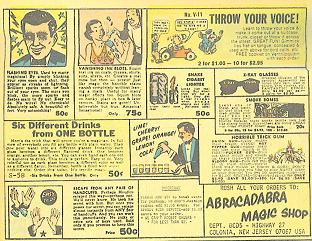 I may not have been the smartest kid in the world but even at a young age I knew something like X-ray specs for a buck were probably not going to work, so I usually didn’t waste my money on such scams. I remember once when a friend of mine in the neighborhood was taken in by an advertisement for a ghost house. Even though it clearly stated “magic trick” in the ad and they were being offered at two for twenty-five cents, he somehow got it into his head that he would receive something the size of his own house! Rather than argue with him, I agreed to split the cost if he wanted to order this, figuring I would at least get a cheesy trick for my 12.5 cents. I then had to stand by painfully as he attempted to convince his father of the bargain he had found while his dad looked at him like he was an idiot. A few years later I would also watch helplessly when he discovered the “Sea Monkeys” he had blathered on about for weeks were nothing more than larva-like brine shrimp when they finally arrived.
I may not have been the smartest kid in the world but even at a young age I knew something like X-ray specs for a buck were probably not going to work, so I usually didn’t waste my money on such scams. I remember once when a friend of mine in the neighborhood was taken in by an advertisement for a ghost house. Even though it clearly stated “magic trick” in the ad and they were being offered at two for twenty-five cents, he somehow got it into his head that he would receive something the size of his own house! Rather than argue with him, I agreed to split the cost if he wanted to order this, figuring I would at least get a cheesy trick for my 12.5 cents. I then had to stand by painfully as he attempted to convince his father of the bargain he had found while his dad looked at him like he was an idiot. A few years later I would also watch helplessly when he discovered the “Sea Monkeys” he had blathered on about for weeks were nothing more than larva-like brine shrimp when they finally arrived.
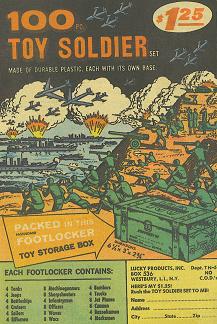
Now this just has to be a good deal, right?
My one lapse of judgment with comic book merchandise was the 100 soldier Army footlocker set for only $1.25. This seemed like a doable deal to me as a kid but, alas, I was wrong. What I received for my cash was a cardboard “footlocker” the size of a large box of kitchen matches. Inside were skimpy soldiers that just barely passed the legal definition of three dimensional. The only plus for these pathetic playthings was that, if griped firmly by the base, the heads could be flicked off with minimal effort. My set never made it past the first weekend after I got them. Durable plastic indeed!
Comics from this era also contained various unrelated cartoons, ads for other comic books, subscription solicitations, and public service announcements. One of the oddest crossovers, and one of the most annoying in my opinion even at the time, was having DC superheroes hock Hostess baked goods (or fried in the case of those disgusting fruit pies). In a four to six panel, one page comic, we would get a high profile hero like Batman thwarting a horde of zombies by feeding them Hostess fruit pies in lieu of human brains. Presumably Gotham police then arrested the zombies during the ensuing outbreak of diarrhea. These were some of the most poorly written ads of all time and probably didn’t increase snack sales to nearly the degree Hostess anticipated.
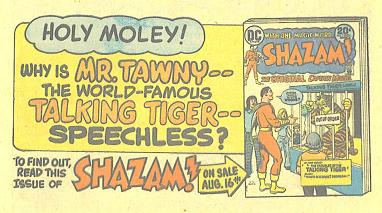
In the 70's, DC acquired the rights to the Fawcett characters including Captain Marvel.
A few years later, around the third grade, I could not only read but I also discovered kindred spirits who shared my love of comics. One of my friends growing up was a huge fan of Batman and tried to get all the books that featured him, especially the main titles like Batman and Detective Comics. I was a Justice League of America fan myself, because, with six or more heroes running around in every issue, I felt I got the most bang for my buck. We managed to meet in the middle on Brave and the Bold, a title that teamed Batman with a different superhero in every issue. These second stringers were often lesser characters like Atom or Hawkman, who were also members of the JLA but did not have their own solo books at the time. We would always discuss the latest issue of B&B and debate who was the better hero in that story. Needless to say, my friend never sided against Batman!
Also around this time, I discovered the miracle of second hand sales. At a charity event for my school, I unearthed a stack of old comic books for the paltry sum of only ten cents each. Sadly, there wasn’t a Detective Comics #27 or any other Golden Age title in the bunch but I got a lot of cool books that were already close to ten years old at the time. This was when I first realized that comic books actually predated my existence, at least by a few years, and I might have missed something coming in when I did. After that, I began to haunt every garage sale, flea market, and thrift store I could find in search of old comic books.
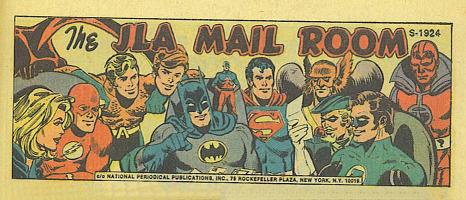
One day at a flea market just a few miles from my house, I discovered a guy with a booth of nothing but comics! He was the very first comic book “dealer” I ever met and he was happy to clue me in on some of the history of the medium during his slow time. I also learned about something called an “Overstreet Price Guide” when I saw his brand new 1976 edition with Will Eisner’s The Spirit on the cover. After bugging my folks to get me a copy of this magical text, I began to grasp just exactly how long comic books had been around and how much some of them were worth.
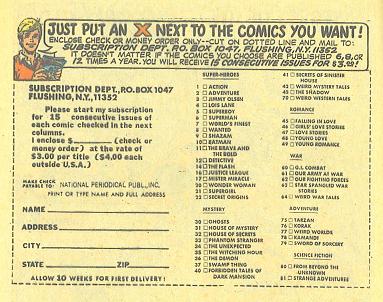
Did anyone ever buy those romance comic books?
Out of the pages of Overstreet, my Batman friend started ordering comic books from dealers all across the country and I tagged along for the odd book when something my allowance could afford popped up. We also learned about bagging comics to preserve them and I am sure the few books that did survive my childhood would not have done so otherwise. For new issues though I was still at the mercy of the convenience store chains, many of which seemed to skip months some times, or the rare independent book store that would stock a few titles.
As I entered high school, my interest in comic books started to fade in favor of other pursuits. I still purchased older issues when I could find them at favorable prices but my efforts to locate them were diminished. It was around this time that Ocala finally got its first comic book store – it wasn’t much but at least it was something. Even though I wasn’t buying new issues and it didn’t take long for me to harvest the small crop of older titles they had, I still liked to drop by from time to time and talk comics with the owner. Unfortunately, the store only lasted a few years and the owner finally decided to pack it in and get what deemed to be a “real job”.
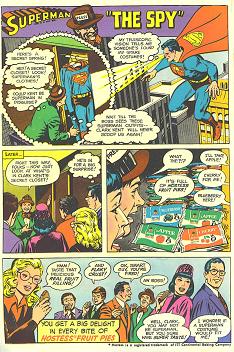
It takes a stomach of steel to keep down Hostess fruit pies!
By the time I got to college, I had just about forgotten about comics except for the rare occasion when I would read a few on the weekends. The Marvel X-Men phenomenon that started in the mid-70’s was going full throttle by this time and, as a fortuitous side effect, DC comics had fallen out of popularity. One of my new interests was science fiction and as I was attending conventions in larger cities, I began to run across dealers who were happy to almost give away their old DC comics that no one, aside from me, seemed to be interested at the time. While these shows were few and far between, I usually came away with a sizable stack of books that gave me plenty of reading material to hold me over until the next one.
Comic book collecting came full circle for me in the late 80’s after I moved to Jacksonville to finish college. I made new friends who were into current comics and they introduced me to such recent milestones as Frank Miller’s The Dark Knight series and Alan Moore’s The Watchmen. I was shocked at just how far story telling had come in comic books. I wasn’t thrilled when I found out that the multiple Earths concept I had enjoyed so much growing up was eradicated in DC’s Crisis on Infinite Earths but I had to give them credit for the send off they gave it. I also discovered Roy Thomas’s All Star Squadron series that brought together almost ever single Golden Age character that DC owned at that point and did a lot to flesh out many of the minor ones.
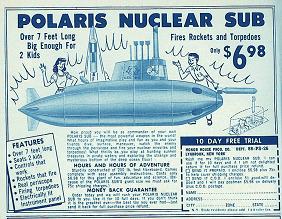
I can't lie, I really wanted one of these bad as a kid!
Since my re-discovery of new comic books, I have never completely lost touch with them again. DC has always managed to have at least a couple of titles that I found worth reading on a regular basis so I always have some kind of pull service going at a local shop. I started visiting garage sales and flea markets again but quickly found out that times had changed and the bargains of my youth were long gone. Fortunately the shows had gotten bigger and more plentiful and even the smaller ones usually yielded a few good buys. Then, of course, the Internet and online sales came along and the whole dynamic changed. With eBay, there is a comic book show with an ever changing inventory going on every minute of every day.
Thanks to online sales and large shows, I have spent the past few years filling in my collection and even completing a few old series that I can now go back and reread at my leisure. While the bulk of my collection is the Silver Age comics I grew up with, I have also had the opportunity to purchase a number of Golden Age issues and have gained a growing respect for these older titles. Whenever I return from a show like Megacon with some new acquisitions or get a package in the mail from some recent purchase, I still look forward to sitting down in a quiet room, going back a few decades in time, and reading each and every issue cover to cover.
